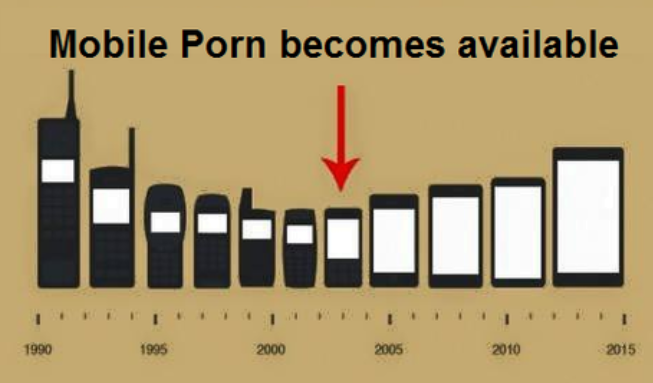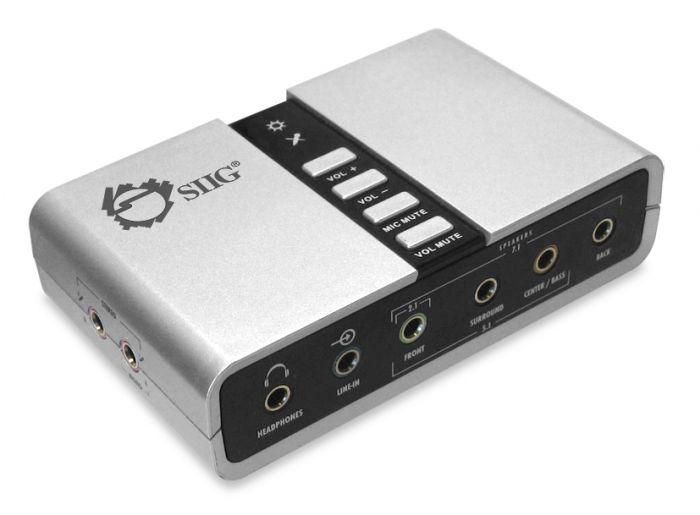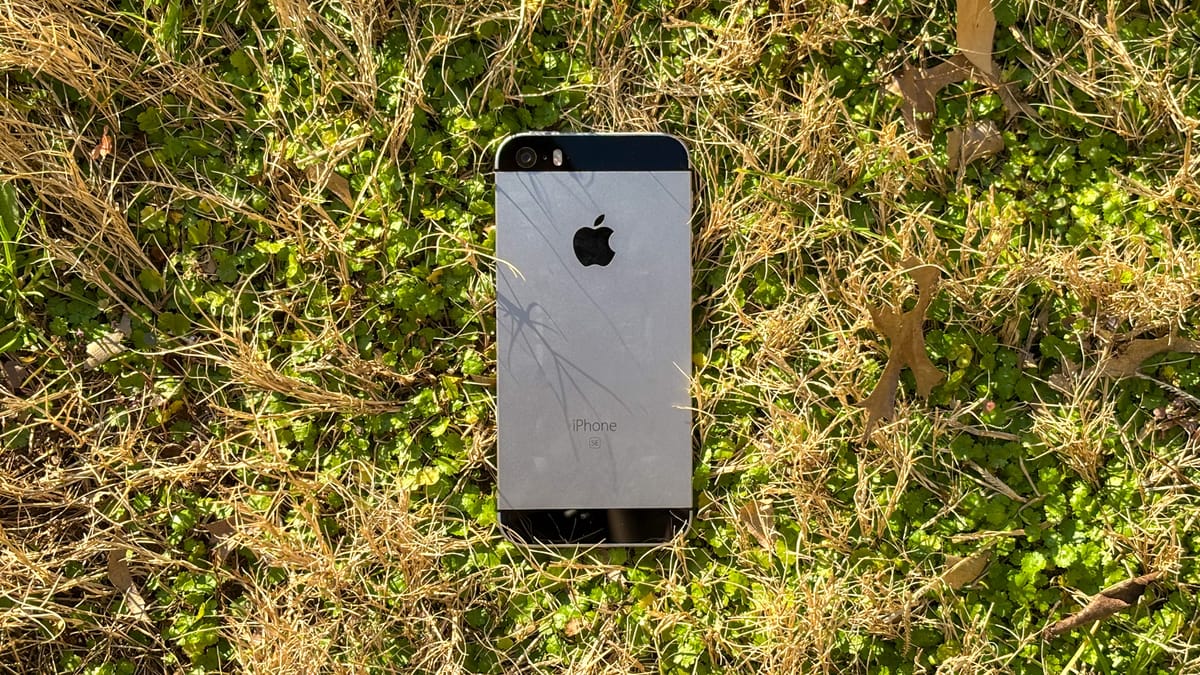- cross-posted to:
- [email protected]
- [email protected]
- cross-posted to:
- [email protected]
- [email protected]
You can. Even if life can get complicated is entirely doable. Unless you live in like China with mandatory apps.
Because every time a manufacturer releases a small phone, nobody buys them.
Well yeah, the people who want a small reliable phone are unlikely to replace them every year for no discernible reason. Cue more articles and comments about how there’s no sale data to support the idea that people want small phones! The odds are stacked against us.
Plenty of people want small but powerful phones. The iPhone Mini line, for the 12 and 13 generation, offered the same features and processing power as the regular sized iPhone. But they didn’t offer as much as the “Pro” model, which came in both normal and “Max” sizes.
So if you wanted the latest and greatest in CPU/GPU, camera sensors/lenses, display tech (not necessarily size), you tended to opt for the phone that just happened to be bigger.
Basically, there’s never been a side by side comparison of the latest tech that actually happens to fit within the size of the first 5 generations of iPhone, versus the standard size of a flagship today.
Idk, I don’t care about powerful, I care about convenient size and convenient battery life. Websites should be websites and text messaging should be text messaging. I hate that every time battery capacity improves there’s a new bloated web experience that breaks real scrolling and new animated Memojis that scan every pore on your face to properly convey how anxious you’re feeling or whatever.
I want a repairable phone. A phone where I can replace the battery
And screen. And buttons.
I also want something that’s supported more than 3 years so there’s a point to repairing it. Ideally, support should come from the community so it can be infinite as long as someone is willing to do the work.
Based on https://postmarketos.org/install/ the Nokia N900 can run the latest stable release of PostmarketOS.
Nokia N900 was a proper Linux-powered phone released in November 2009.
So yeah, it’s been getting over 15 years of community support so far.
Edit: Fixed typo
What’s wrong with Fairphone then? Think I’m gonna buy FP 6 when it arrives
I’ve also been looking at FP but I believe there are some issues of getting one outside of Europe.
I crossed them off the list after they ditched the headphone jack and the CEO tried to blow smoke up everyone’s ass as to why. Then they introduced their new Bluetooth headphones.
We only get FF 4 here (US), and through a reseller (Murena). And my understanding is that there are caveats in the bands it supports.
I am in the US, and bought my FP5 through clove technologies in the UK. I’m on T-Mobile and get 5G and everything.
No Jack.
They are pretty expensive for the hardware.
Unless I’m misremembering don’t they charge flagship prices but have midrange specs?
Unfortunately, that’s the cost you pay for a more “ethical” phone. Apple, Samsung, and all the mainstream phones are cheaper because they are subsidized by underpaid labor and sometimes even child labor.
(Not judging people who buy mainstream phones, just stating the reality.)
Thanks! I didn’t know that was part of their thing. I just thought they made the phones repairable. Has their supply chain been audited by a third party?
Hum… So Fairphone ?
I really wanted to buy the Fairphone 5, but they don’t ship replacement parts to where I live which makes the entire concept pointless.
Forward shipping exists.
Yea, but with the De Minimis rule overturned by the trump administration, importing it to the US is gonna have import fees. And also a lot of fees for each part you import, making the whole “repairability” thing pointless as it cost so much.
OK, so that’s a possibility, but when you start adding a ~$30 fee on top of the cost of the part and shipping from Fairphone you’re looking at about $100 per repair, which stops making sense pretty quickly. You’re better off spending a little more money on a good device that is dust- and moisture-sealed and taking care of it for a few years.
Makes sense. But you can offset part of the shipping from the fact that you can easily do the repair yourself.
Another possibility would be the HMD Skyline. Less repairable than Fairphones, but still far easier than most other smartphones. Only 2 years of updates though.
But starting from 2027, a removable battery will be mandatory for all smartphone in the EU, which mean most, if not all smartphone will switch to removable battery. This may also make repair a lot easier.
I am of two minds on this. I love repairing electronic equipment, it’s what I do for a living, and I buy old tech to fix up all the time.
Replaceable batteries seem like a good thing, in terms of reducing waste for devices that are otherwise still useful… theoretically.
Realistically, the charge management circuitry and the battery chemistry in phones has gotten so good today that most batteries have a useful lifespan that is longer than the useful life of the device. Three years is easily doable for any mid-range phone on the market.
At five years you’re probably going to be disappointed with the battery performance, but how many people are continuing to use a 5-year-old phone? At that point the internal technology has changed substantially and there might even be a new network standard that you want to use, so you’re probably replacing the whole device even if replacing only the battery is an option.
On top of that, giving the user access to the battery means the phone body can’t be fully sealed against moisture and dust, plus the access panel is a big mechanical weakpoint which means the body will be less rigid than a fully enclosed device and thus more prone to breaking when dropped or sat on. Adding those weaknesses back into mobile devices will make them more fragile and (I predict) will lead to more frequent failure and replacement of the entire device, which will offset any waste-saving benefit from the replaceable battery.
Plus, the addional space required to fit in the replaceable battery casing, the removable access panel and the contact points for the battery means either the whole device will have to be bulkier or the battery will have to be smaller (than it would otherwise be with a permanent internal battery).
Replaceable batteries made a lot more sense in 2010 when the batteries were shit (and sometimes still NiCad) and the charge management was basically nonexistent (so the battery cycling wore it out faster). Today it’s weight and bulk, plus fragility that will probably lead to equivalent or increased e-waste.
At five years you’re probably going to be disappointed with the battery performance, but how many people are continuing to use a 5-year-old phone?
My brother has a 6+ years old Iphone, my parents both have a 5 years old Samsung Galaxy Phone (S21 and A51). None of them complains.
On top of that, giving the user access to the battery means the phone body can’t be fully sealed against moisture and dust
Do you think computer waterblocks are sealed using glue? They aren’t. Screws and a good old o-ring are all you need to make a repairable AND waterproof phone. But they don’t want a repairable phone, they want you to buy a new one whenever possible.
plus the access panel is a big mechanical weakpoint which means the body will be less rigid than a fully enclosed device and thus more prone to breaking when dropped or sat on.
I dropped my FP5 multiple time. He never broke. My brother IPhone got a shatered back, and he had to replace the screen once for falling from a distance the FP5 just shrug off.
Plus, the addional space required to fit in the replaceable battery casing, the removable access panel and the contact points for the battery means either the whole device will have to be bulkier or the battery will have to be smaller (than it would otherwise be with a permanent internal battery).
True, but ot also don’t have to be the old pogo pin way. Any currently available battery is a removable battery given it is user accessible and isn’t glued to the board.
Today it’s weight and bulk, plus fragility that will probably lead to equivalent or increased e-waste.
I wonder… What would be the biggest e-waste? A dead battery or a dead battery with a whole perfectly functional phone attached to it?
For the US, its not just shipping, but also an import fee on top of that, since the De Minimis rule just got overturned by the trump administration.
HMD (Nokia) Skyline has a cool feature where you unscrew 1 screw and can change various things like battery. Unfortunately phone itself is not impressive especially from OS update standpoint (only 2 year support for major Android versions). I would love to see this idea being copied by other manufacturers.
Unfortunately phone itself is not impressive especially from OS update standpoint
I swear to god manufacturers do this on purpose so that they can point to the low volume of sales and claim “See! People don’t really want these features” when in reality they’ve just slapped a couple good features onto a completely dog shit device.
I’m curious, how repairable? Like comfortable with a solder iron or slots and what not like a PC?
Repairable phones would be great but the demand for them hasn’t undone the cost of design for them. There’s a lot of tech in an incredibly small package, so repairable phone would still require people to have specialty equipment to repair.
Like very few people own an oven for working with BGA chips. And if we go with socket based chips, the thickness of the phone has to increase or the battery has to decrease.
Don’t get me wrong, I think an open and repairable phone would be great. But having one is an engineering challenge that most phone makers have opted to just skip putting dollars into because the demand for one doesn’t justify the cost. Your average buyer is just chasing shiny and doesn’t see repairing their dinosaur as valuable.
But yeah, I’m sure there’s plenty here that would love such a device. Sadly we are not the majority.
Imo I don’t think the goal is/should be “every part is repairable by any average person without tools” tbh. Like that would be awesome but it also isn’t realistic, like you said phones are super complicated. But making simple repairs – stuff like swapping a battery – possible for anybody is realistic imo, and then the rest should be as easy to repair as possible for local shops or someone who does have the necessary skills and equipment. At least personally I feel like that’s a good spot to aim for.
“Why can’t we go back to small phones”
Company releases small phone
“No one” buys it
Company stops making small phones
People complaining why there are no small phones
no one bought it because it was shit. companies do this all the time so they can make more expensive things more cheaply, and force people into buying the most expensive.
I want an easily removable battery. As in, I want to be able to have two batteries, one in my phone and another in a charger and I just swap them once a day. I used to be able to do that, and it was normal. Now, the only phones that have that are either extremely garbage or also feature a barcode scanner and cost as much as a “flagship” device.
“because it was shit” if you look at the iPhone 13 and iPhone 13 mini they were essentially the same phone just in different sizes, while the sales of the mini stayed in the low 1 diget % the iPhone 13 was around 35-40% of all iPhone sales in it’s first year.
I agree with some of the things in your 2nd part it has nothing to do with small phones.
And not to say you said it but it came up in the article a couple times, comparing screen inch sizes to determine if a phone is big or not is flawed > the screen to body ratio increased a lot over the last year’s which means that a phone could have the same physical size with a bigger screen.
To be fair, these are Apple users we’re talking about. They uhh… kind of epitomize rampant American consumerism.
I get your perspective, but I think it’s inaccurate when applied to current consumer behavior. The iPhone market share is like 60%. You can’t tell me that 60% is inherently more consumerist than the 40% that is Android users, especially when we’re talking about how Apple users actually tend to keep their phones longer before upgrading/updating to a new phone.
Especially when we’re talking about the mid-tier, non-flagship model in the lineup, like the non-Pro iPhones.
I think I may have just done a bad job of explaining my first point:
I’m saying that manufacturers are putting these features on phones that people weren’t going to buy anyway on purpose, in order to support the narrative that nobody wants those features.
There’s counter examples of course, but for the most part I think what I said is applicable.
@BlueBaggy @corbin as a tiny-handed person, I resent being called “no one”
Don’t forget that company does fuck all in advertising the small phone at a similar level as the “regular sized” phone
I don’t know which small phones have been released recently but I’ve used an iPhone Mini and decided against it. Not because it’s small but rather because it’s not small enough.
See, I do like a big screen more than a small one. That said, the phone is something I carry in my pocket so there’s a balancing act to be done there. What was really great about the original iPhone’s size was not that it had a small screen. It’s that it was small enough that I could reach all corners of the screen with my thumb.
None of the recent small phones I tried had that advantage. In that case, since there’s no clear usability advantage to the smaller model, I’ll take the larger screen instead.
Because apparently people want big phones.
For the last 10-15 years it’s been a boiling frog situation really - .1 or .2" increase every generation until 7" somehow becomes the norm (for a phone, not a tablet, mind you).
I wish there were more small hi-end phones too.
Large phones are supposed to be called phablets, but it seems like that distinction was phased out as they got bigger.
I remember that term. It was short-lived.
Yeah, because nobody wanted to call a phone a phablet. It’s a stupid name.
Phablets were more like an iPad Mini than an iPhone Pro Max back then. They were huge compared to the biggest phones around. I remember seeing people talking on the street with highe phones pressed to their cheeks.
This is more of what I remember.

It’s wild how the Samsung Galaxy Note was considered a large phone when you look at today’s phone sizes.
Why can’t we go back to small phones?

I think this is correlation, not causation, as this was also when touch screens started being made
it’s also when mobile media in general was available on your phone. tv, movies, YouTube, games, everything. not everything is about porn.
not everything is about porn.
You speak only for yourself.
I definitely was looking at porn on my 240x320 Nokia screen.
Sexy sexy nibbles the snake
240x320
One boob takes up 76000 of your 76800 pixels.
You overestimate the resolution of porn back then. 90s kids needed some imagination to fill in the gaps…
Oh, I remember. Full res pic above the collar bone, then that weird speckled rendering for a couple lines and then… grey.
You can. Ditch Apple and join us. Plenty of small phone selections here on the other side. Edit: you know what. Android doesn’t have that many either.
Samsung, Xiaomi, Oppo/OnePlus, and Vivo, the top four Android smartphone manufacturers, have not released a single phone with a display 5.5 inches or smaller in the past three years, according to data from GSMArena.
Seems like they’re going away on the Android side too.
Sure sure, plenty more that offers 4.7 and smaller.
Anything decent without bloatware, with a propper non-MediaTec processor and a long support time with security patches?
You know. I stand corrected.
I used a Jelly pro for two years as a daily driver. Smaller than a credit card
Well, I can’t speak for everyone else, but I can’t go back because they don’t sell any small phones.
I picked the Pixel 8 because:
- it runs GrapheneOS
- It was a little smaller than the Pixel 8 Pro
If there was a smaller version available, I would’ve gotten that instead.
I’ve been using the “A” branch of the Pixel line for years now.
But I use CalyxOS so I guess you and I have to be enemies now. My name is Inigo Montoya, you use a different OS, prepare to die.
Ah man… I just installed graphene to try it … (turns around and runs)
.
Seriously though, would be nice if they could get along and share code and efforts, I’d love to try a graphene-hardened OS with sandboxed microg (instead of gsf) and datura firewall :) Maybe even have the option to have microg in one profile and google play in another. One can dream
Graphene and Calyx are two different paths to two different destinations. Graphene is for security, Calyx is for privacy.
Yep, that’s what I gather as well. I just wish we didn’t have to choose, and could get both
I picked the Pixel A because:
- It runs GrapheneOS
- It’s slightly smaller and slightly cheaper than the normal version
- The back is plastic and not glass
Glad I can use it and type on it one-handed, can’t imagine using a bigger phone.
The only A series Pixel phone smaller than the Pixel 8 was the Pixel 4a.
I can’t trust anything made by google. It’s a company that literally makes its money capturing everything everyone does on the internet…and yet the phone they make is the ONLY phone immune to having everything captured…
Sorry. Not buying it. There will be a chip in there phoning home we’ll find out about in a decade.
I doubt that, but I respect the skepticism. I happen to trust the GrapheneOS devs to reveal if that was the case.
I picked the Sony Xperia 1v because:
- 71mm width (similar to pixel 8)
- Flagship specs (*for 2023 - Snapdragon 8 gen2 / 12gb)
- not Google Samsung or Apple
- little to no bloatware
- Decent cameras
- SD card expandable
- Headphone jack 3.5mm (though I haven’t used it yet)
- No glass back (and solid build quality allround)
- LineageOS support (for when vendor support runs out)
- I got a good refurb deal in 2024
I was considering a Zenphone 10 or Xperia 5 v - mainly for size and brand reasons as above - when i found this for £650
I picked the 5ii for similar reasons at the time.
The problem is it only gets 2 years of support, so I haven’t gotten an update in years. Sony is living in 2010.
The fingerprint reader slowly stopped working 6 months ago via a prolific software bug that is all over forums for xperias that will never be fixed.
The battery (even ONLY charging it to 80% using battery care) is horrific after a few years, mediocre when I got it and the standby time is shit. It loses 1.5-2% battery per hour not being used at all now. I get maybe 4h SOT browsing (much less with video).
The default camera app is crap and not even worth using…
I want to try lineageOS when I get the time to see if it fixes the battery and fingerprint reader, but here in Belgium we really need access to our bank apps because almost everything is done through there.
Edit: also the xperia 1v has a glass back… https://m.gsmarena.com/sony_xperia_1_v-12263.php
I had a 5 II too, used lineageOS for years, worked great. Doesn’t totally solve the battery or fingerprint reader. My screen got the dreaded green lightsaber too. Nail in the coffin was Australia turning off 3G so it can’t make calls anymore. (Wasn’t officially sold here so they didn’t bother loading it with VoLTE profiles)
I’m clinging to my SE. It’s the last small phone made by anyone other than Chinese no-names. I will be sad when it’s no longer viable as an option.
my Chinese tiny phone has a name, it’s the Unihertz Jelly Star. they even have a subreddit, not sure what makes you think it’s a “no name” they make a lot of phones for niches in today’s world including one with a physical qwerty keyboard.
now the fact that they’re the only company filling those niches sucks, but it’s better than nobody doing it.
I upgraded to a Sony Xperia XZ2 compact last year. It has a 5" screen and decent capabilities, the only down side is it doesn’t support 5G. For a phone that’s over 5 years old, it’s probably the most recent usable phone available which actually fits in my pocket.
Seriously, don’t show me a damn tablet computer and try to sell it to me as a mobile phone. If you can’t make a compact phone then you’re not really advancing the technology, are you?
If I can’t use it one-handed (using ALL physical buttons and ALL parts of the screen), then it’s not a phone.
Seriously, this is how we used to define the difference between phones and tables - one-hand or two-hand use.
They do, but service providers don’t like selling them. There isn’t as much of a return on smaller/ dumb/ cheap phones. I used to work at spectrum, and we’d speak of the cheap phones in hushed tones like they were the boogeyman. It felt horrible because I was using my cheap android while selling people iPhone 15s.
So once again instead of providing choice the market is simply phasing out things with smaller profit margins as if they planned it together in some kind of cartel.
Demand also isn’t there. The iPhone SE sold ok, but the other thing to keep in mind was that it was the cheap iPhone too so it’s supposed to sell.
If it was outselling the main model every year then they’d keep making them small. But they didn’t so they got dropped.
Because most people use their phone as their main, if not only, device, so a bigger screen is more desirable to consume content.
By that logic everyone should buy a foldable
I would if they were more durable, easier to repair and cheaper…
I would, if long term durability is not a concern and the price is not too damn expensive.
Basically if money is no issue.
Unfortunately, they haven’t figured out a way to get gorilla glass to bend and not shatter so the current plastic screen is way too weak and a fingernail can scratch it. Not good for a $1500+ device.
A $100 Motorola Moto G Play has a 6.5 inch screen. To get a foldable big enough to double the screen area would cost $1400 more. Most people couldn’t afford that, so the budget phone is the best price/screensize compromise. The foldable still get more easily scratched than the $100 phone which just makes foldables very bad.
I don’t understand why so many people here keep saying that it’s too hard to make a small phone when all these companies literally make watches with 5G connections…
They always lean a little too hard into making the small one the “budget” phone and end up gimping it into something nobody wants, and yet they still don’t make it cost attractive.
Compared to the SomePhone Pro, the SomePhone Mini has:
- 6GB of RAM rather than 8. (I mean, okay, what do I need that much RAM for?)
- 128GB onboard storage rather than 512GB (Those chips are the same footprint so that wasn’t done for miniaturization, but I don’t store a lot on my phone so ok)
- No SD card slot. (I suppose you could argue that IS for miniaturization but it’s still a kick in the pants)
- 1080p display rather than 4k. (fine, the PPI is still finer than my eyes)
- 3100mAh battery instead of 3600 (You know the reduced resolution on the display will probably make up for that anyway)
- No NFC (really?)
- No fast charging (fucking sigh)
- No wireless charging (pegwarmer says what?)
- 5.9 inch 9:21 display (so it’s 89% the size of the Pro model anyway?)
- a laptop grade VGA camera (you’re actively trying to make this product fail, aren’t you?)
- Locked bootloader, locked carrier (because of course)
- $899 instead of $949 MSRP (Okay just stop saying words and drown yourself in the septic tank)
This is exactly the problem. I don’t need a budget phone, I need a small phone
Hell I wish the big phones had SD card slots…
There are very very few phones that have them anymore. Chinese phones, Sony, fairphone, and Samsung midrange, that is about it…
Yes they should put HUGE batteries into small phones!!!
/sThe latest pixel pro is available in both the regular size and the XL. In previous models the pro was only available as the XL.
The “small” P9P is considerably larger than the iPhone 12/13 mini, which is the size OP wants.
What’s the website you used to make this? I used to have it bookmarked a long time ago but I can’t find it anywhere now.
i don’t think it’s “too hard” to make small phones. but i bet it’s easier to sell bigger phones with more profit margin.
Who said that? That’s not the limiting factor. Also, smartwatches have crappy processors.
Supposedly, what’s hard is making a phone with good performance and battery life that’s also small.
If they’re going to make only bog phones they could at least bring back all the hardware features they’ve removed over the years.
I don’t want a small phone or a slide out keyboards.
I want :
Replaceable battery.
Non glass back.
3.5 jack.3.5 jack.
They exist, but it’ll constrain your phone choices a lot.
I’d just get a USB-C-to-1/8"-TRS adapter. If you want to charge while playing, you can get one with passthrough.
Without passthrough:
https://www.amazon.com/Anker-Adapter-Female-Samsung-Devices/dp/B08Z3B5QL3
or with passthrough:
https://www.amazon.com/ZOOAUX-Headphone-Charging-Earphones-Compatible/dp/B094Z6149B
Can probably just leave the thing plugged into your headphones.
Yeah I get they exist, but I will lose that in a day
Just leave it plugged into the headphones, don’t even take it off. I mean, I have 1/4 inch audio hardware, and I’ve got 1/8 inch headphones that have a 1/8 inch to 1/4 inch adaptor that just lives on the end.
I totally understand people who want to use wired, TRS headphones. They’re inexpensive, widespread, aren’t going to become e-waste when their battery dies, aren’t going to become obsolete when radio protocols move on, are lightweight, don’t suffer from radio interference etc. I have a bunch of TRS headphones and like them. Only downside is that they need some power source if you want to do ANC, but it’s not like one has to have ANC.
But…I think that a lot of people are treating it as a “we live in a Bluetooth world or a wired headphones world, and which we do depends on whether there’s a TRS jack on the phone itself”.
I’d also add that if you have a USB-to-TRS device acting as your DAC, you can swap in others, aren’t stuck with the on-phone DAC. I had a phone that had an extremely obnoxious tendency to, when charging in the car, play noise back through the headphones jack (and thus to my car’s aux jack and through the speakers). Was fine on Bluetooth. Problem was that the manufacturer had failed to stick the proper filtering circuitry in the power supply for the DAC and was spewing noise from USB power into the audio output, probably because you couldn’t see a problem when the phone was running on battery and filtering circuitry for the DAC uses up space in the cramped confines of the phone. (In practice, USB power can be amazingly dirty – I was astonished watching some people with oscilloscopes look at the power lines on USB.) Anyway, the noise was appalling. If you use the built-in DAC, you can’t really change the thing out. With an external DAC, you can stick a reasonable one in.
I don’t know how the ones I linked to above perform. But I’m confident that if they are a problem, there are other DACs out there. Whereas with a built-in jack, you get the DAC that the phone manufacturer provides, and clearly some are willing to ship their phones with an inadequate DAC.
I’d kind of like to see someone set up a rig with intentionally-dirty USB power and a bunch of USB audio interfaces and USB-powered devices with an audio output and then see how much noise leaks through into the DAC’s output.
EDIT: I also had a (purely analog) audio mixer at one point that used USB power and also leaked audible – not as bad as my phone in the car – noise from the USB power source into the audio. Solved that by moving it from my computer’s USB output to a dedicated USB charger. I’m sure that there’s still leakage and if I were doing pro audio work with that hardware, I’d still be looking at it, but at least it isn’t easily-perceptible to me any more.
I also had an inexpensive USB audio interface that leaked a little audible noise into its output, one of these:

It wasn’t terrible — I used the thing for years — and on that, moving the USB cable around would adjust how much audible noise was making it out the DAC’s output, so it was definitely unfiltered noise coming in from USB power.
I think that it might be underappreciated how bad the DAC situation in home electronics is. I haven’t seen people trying to measure and quantify it. I have seen lots of people going to great lengths to measure frequency response on headphones, whether or not a digital data cable has (probably completely unnecessary) shielding, and worry about the encoding of their music and sometimes even its encoding for wireless transmission to headphones over Bluetooth. But “how much junk from the power source is leaking into the DAC’s output” seems to be a curiously un-measured area.
3.5 jack is easy, most budget phones have them (along with a MicroSD card slot)
The replaceable battery? That’s gonna be hard to find. There the obvious Fairphone, but its very costly for its specs and is only made for EU, and even if someone from the US imports it, the only US carrier allowing it is Tmobile.
Samsung Galaxy XCover series have IP67 Water resistance, headphone jack, and MicroSD card slot, and the replaceable battery, but its specs are not that good for its cost (as reported by various Reddit users).
I wouldn’t trust the water resistance tho. One drop into a puddle and the back comes off exposing the internals.
The xcovers backs usually stay on when you drop them and the back only really holds the battery in. The internals are protected by another layer of plastic.
As you say the specs do suck though.
Bigger screens mean bigger and more obtrusive ads.
I’m convinced this is 90% of the reason right here.
I don’t think phone makers are that close to ad companies.
It’s most likely the same thing as a truck- people say they don’t want this insecurity driven monstrosity, but test after test, people buy the bigger one.
Edit: I mis-wrote that, my implication was that the people deciding the phone size spec are going to be doing it off hard data like what customers like to buy and what extra hardware they can fit in. I know Google owns Pixel, but the data point surrounding more ad impressions is extremely weak compared to literally any other data point regarding consumer choices
I don’t think phone makers are that close to ad companies
Google?
Ironically they still have a small phone
I have a Pixel. It is literally made by one of the largest advertising companies in the world.
Google is not interested in a larger screen size so that more ads that otherwise wouldn’t have been scrolled to can count as an impression. Given 95% of apps are scroll based anyways, you would get what - a couple percent more impressions on ads the user wouldn’t have scrolled past before closing their phone?
No, this is not the main reason, especially when you consider every major phone brand on the market is going this way.
It’s obviously a case of “consumers see big and click buy” (see: cars) and “big phone means more battery life and better specs we can market”.
You see ads on your phone?
Here’s my dilemma:
- Been without cell service since the pandemic (eventually stopped using the smart phone altogether)
- All my digital needs are satisfied, devices and functionality in every room for every purpose I need
- Have multiple forms of solid and satisfactory communication channels (don’t need a cell number)
I’ve thought about buying a model I could jailbreak, but again it’s just to use a system that’s abusive. “Download our app!”, “Use our digital coupons!”, “Link your phone number!”, “Scan our code!”, “Let us track your location for your convenience!”.
I’m really a niche subgroup though, I already need other devices while at work that a phone wouldn’t suffice for. I kinda see more people going this route though. If your transportation has a computer, then what’s the endpoint in carrying a phone? If your job requires digital devices, the phone is basically reduced to a large brick of a communication device. I see more and more equipment being specialized and having added communication aspects for more complicated machinery, cell phones are not going to keep up with it in a general sense.
tldr: cell phones are just a fad with an abusive system that will die out one day and be remembered like rotary phones. They’re generally subpar for any specific task and are only a place holder till we figure out better systems.
Can we make this its own thread? Cause I’m genuinely interested in this often.
I think people don’t want specialised tools, they want one tool they can always have with them. We can see the decline of computer use (and literacy) as a consequence of this. Many young people don’t use computers much, if at all.
I don’t know how you youngsters do it.
One hand eternally glued to this big phone and now they need the other for a soup thermos they suddenly feel the need to drag with them everywhere.























